Figure 1 shows a parallel single-gate gate valve without diversion holes. The valve adopts the valve seat to float downstream, the spring preloads the automatic sealing structure, the opening and closing force is small, the higher the working pressure, the better the sealing performance. The seal is provided with a sealing grease injection mechanism. Mainly made of carbon steel, stainless acid-resistant steel, alloy steel and other materials. The connection form is flange connection, and the flange connection size can be selected from standard flanges such as GB, JB, HG, and ASME. It can be used as an opening and closing device for oil, petroleum products, natural gas, coal gas, chemical industry, environmental protection and other transportation pipelines, as well as venting systems and oil and gas storage equipment.
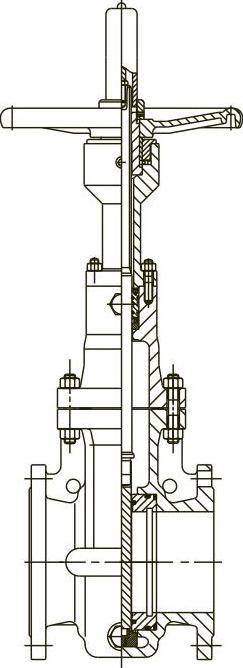
Figure 1 Parallel type single gate gate valve without diversion hole
2. Double gate plate gate valve without diversion hole
As shown in Figure 2 to Figure 5, the parallel double gate gate valve can be divided into two types: automatic sealing type (Figure 2) and open type. The commonly used structures of the open-type parallel double gate are divided into two structures: the top wedge type (Figure 3, Figure 4) and the double slope type (Figure 5).
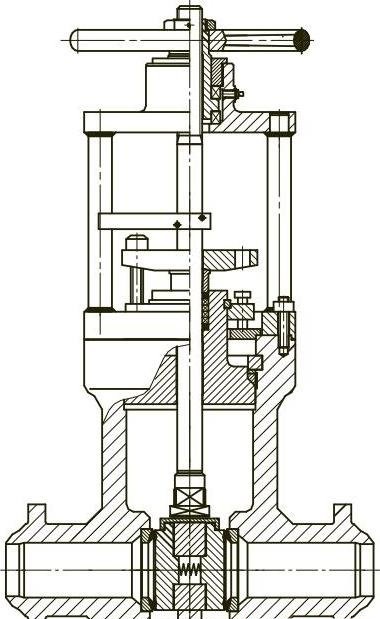
Figure 2 Parallel self-sealing double gate gate valve without diversion hole
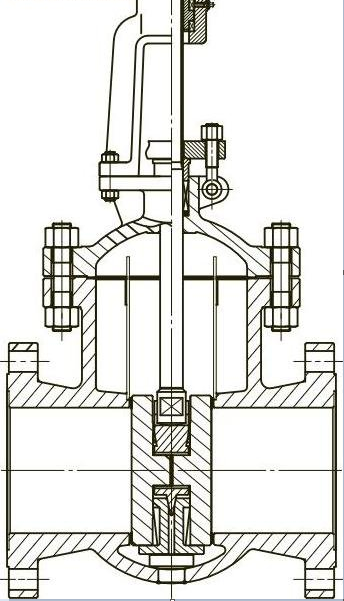
Figure 3 Parallel open top wedge type double gate gate valve without diversion holes
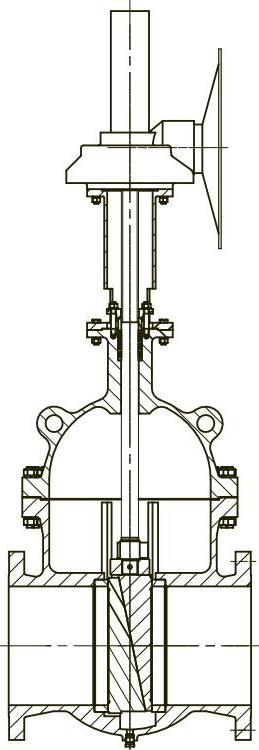
Figure 5 Parallel opening of double-inclined double-gate gate valve without diversion holes
The automatic sealing type relies on the force of the spring to open the two gates, forming a pre-tightening pressure ratio with the two valve seats, and at the same time forming a sealing pressure ratio under the action of the medium pressure to achieve sealing. The open type relies on the wedge top or wedge to open the two gates to form a forced sealing pressure ratio with the two valve seats to achieve sealing.
There are two types of connection between the valve seat and the valve body of the double gate flat gate valve without diversion holes, one is expansion type, and the other is welding type. This kind of valve generally has a seal on the valve stem, which protects the packing from the medium pressure in the open state; a thrust bearing is installed at the valve stem nut to reduce the operating torque; the connection with the pipeline generally includes flange connection and pairing. Two types of connections are welded. Dimensions are the same as standard gate valves.
Figure 6 shows a combined sealed double gate parallel gate valve, with a wedge surface structure designed between the spring-loaded double gates. The initial sealing pre-tightening force provided by the spring is further applied by the valve stem, which pushes the wedge surface to separate the two gate plates and presses against the two valve seats to form a forced seal. This type of valve seals both seats simultaneously.
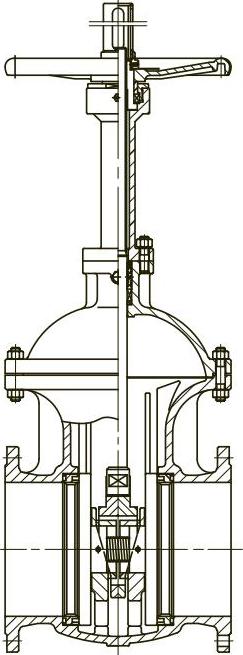
Figure 6 Parallel combined double gate gate valve without diversion hole
3. Single gate plate gate valve with diversion hole
The valve seat of the flat gate valve with diversion hole (Figure 7) is a piston floating type, which is usually composed of two different materials: metal and non-metal, that is, soft materials such as high-elastic synthetic rubber or PTFE are embedded in stainless steel Or in the forged steel bearing ring with anti-corrosion coating (such as ENP, etc.), it forms a double seal of soft seal to metal and metal to metal. The gate is made of stainless steel, carbon steel or alloy steel forging surface ENP or surfacing hard alloy. The lower part of the gate has a guide hole equal to the nominal size. When the valve is fully opened, the guide hole on the gate is It communicates with the valve seat hole and seals the valve body cavity with the valve seat surface to prevent solid particles from entering. The sealing of the floating seat provides a double block and bleed function (DBB). If the seat seal fails in use, a temporary emergency seal can be made by injecting sealing grease into the sealing surface. Usually, there is also a drain plug at the lower part of the valve body, and opening the drain plug can remove the dirt in the body cavity. Sealing grease can be injected into the stuffing box, which can not only ensure the reliable sealing of the valve stem, but also provide lubrication for the valve stem. The valve has good sealing performance, convenient operation, flexibility, labor saving, small flow resistance coefficient, easy to clean the pipeline, and long service life. It is suitable for oil, petroleum products, natural gas, gas, water and other media. 20972, NACE MR 0175 and other standards. Figure 8 shows a flat gate valve with diversion holes for wellhead installations.
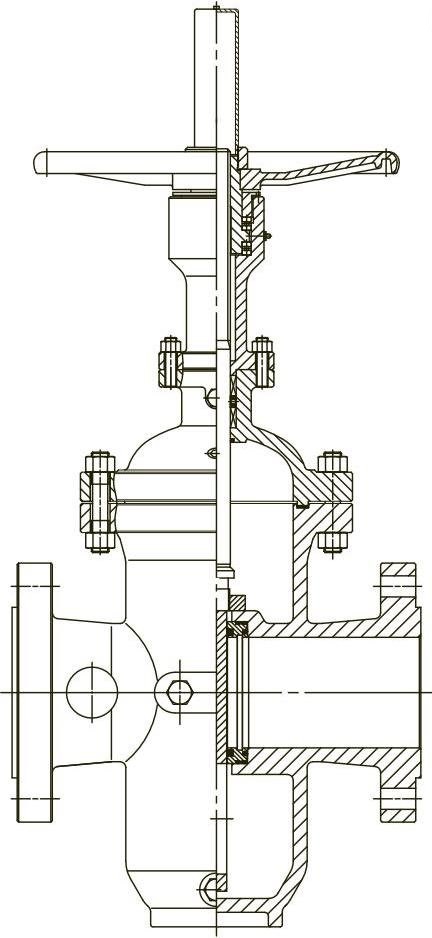
Figure 7 Parallel single gate gate valve with diversion hole
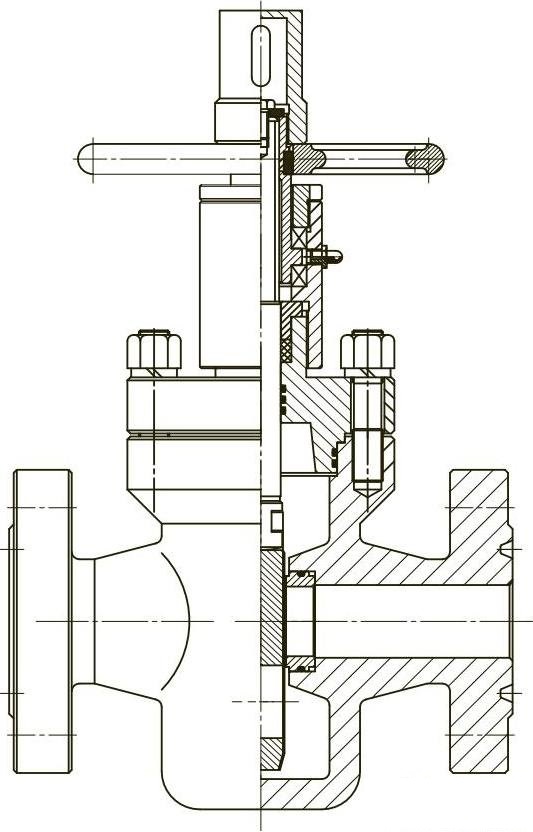
Fig.8 Parallel single gate valve for wellhead device with diversion hole
4. Double gate plate gate valve with diversion hole
Figure 9 shows a double gate flat gate valve with diversion holes. It relies on the valve seat fixed on the valve body and two wedge-to-wedge gates to form a sealing pair. During the entire opening and closing process, the gate never leaves the sealing surface of the valve seat, so that the medium does not enter the lower cavity of the valve body. The purge line removes dirt from the valve body. The two wedge gates are connected together by three pins and hooks on them. The connection with the pipeline is mostly flange connection, and the flange connection size can be selected from standard flanges such as GB, JB, HG, and ASME. It is suitable for oil and natural gas pipelines, and can be used for cleaning and cleaning in the fully open state.
5. Flat gate valve for gas pipeline
Figures 10 to 12 show the common structure of the gas dark rod flat gate valve, that is, the valve rod nut and the gate plate are moved up and down together by rotating the valve rod. The limit is determined by the position of the valve stem nut, which can greatly save installation and operation space. It can be divided into no diversion hole, with diversion hole, single gate and double gate. It is suitable for cutting off or circulating discharge of oil, natural gas, water and other medium transmission pipelines, and is widely used in natural gas, petroleum, chemical, electric power, commerce, metallurgy, textile, oil depot and military industries.
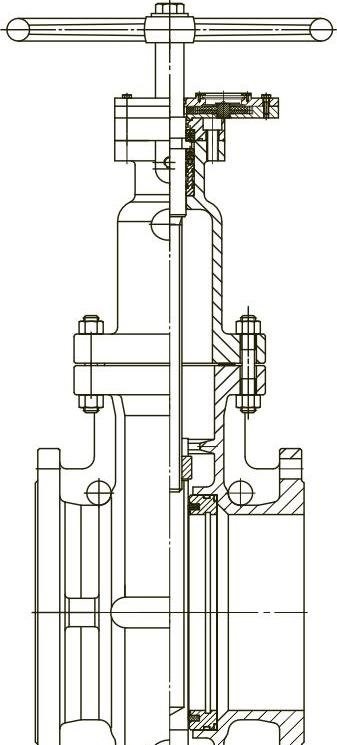
Figure 10 Non-rising stem without diversion hole parallel single gate gate valve

Figure 11 Non-rising stem with diversion hole parallel single gate gate valve
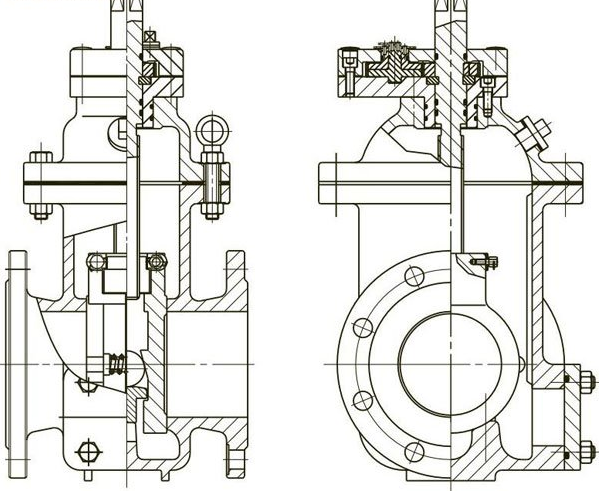
Figure 12. The lower top wedge type double gate gate valve is opened in parallel with the non-rising stem without the diversion hole.
6. Flat gate valve with diversion hole on non-rising stem
Figure 13 shows a flat gate valve with a diversion hole with a dark rod single gate, and Figure 14 shows a flat gate valve with a diversion hole with a dark rod double gate. Designed to meet API 6A standards. Body and bonnet are metal-to-metal seals. The gate and valve seat can be spring preloaded valve seat according to user requirements, which makes the sealing more reliable. There is a diversion hole on the gate, which is convenient for cleaning the pipeline after opening. Mainly suitable for oil and natural gas wellhead devices. The anti-sulfur type meets the requirements of GB/T 20972, NACE MR0175 and other standards.
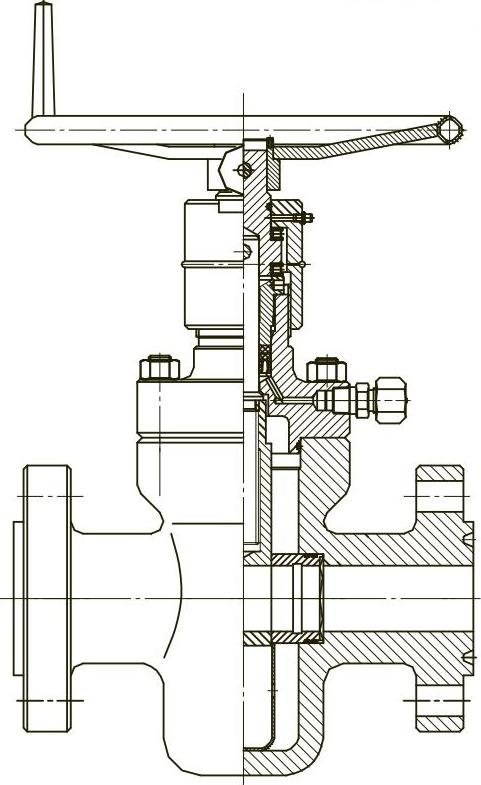
Figure 13. Parallel single gate gate valve for wellhead device with non-rising stem and diversion hole
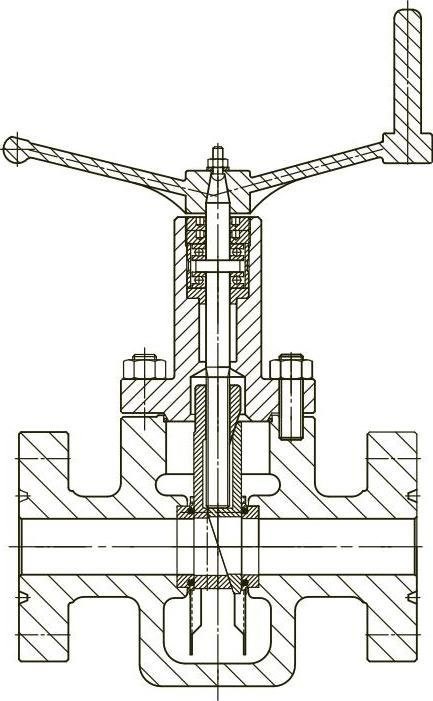
Figure 14 The non-rising stem has diversion holes to open the double-inclined double-gate gate valve in parallel
7. High temperature flat gate valve
①The structure of the high temperature flat gate valve is fully open or fully closed under the working state. The gate is a metal plate with two parallel sides. The valve passage is composed of two annular elastic non-metallic sealing rings. By adjusting the bolts connecting the two sealing surfaces, the appropriate pressure ratio between the gate and the sealing surface can be adjusted. , so that it is in close contact to achieve sealing. The operating mechanism of the valve has two modes: pneumatic and manual. Figure 15 is a schematic diagram of the structure of the pneumatic high-temperature flat gate valve.
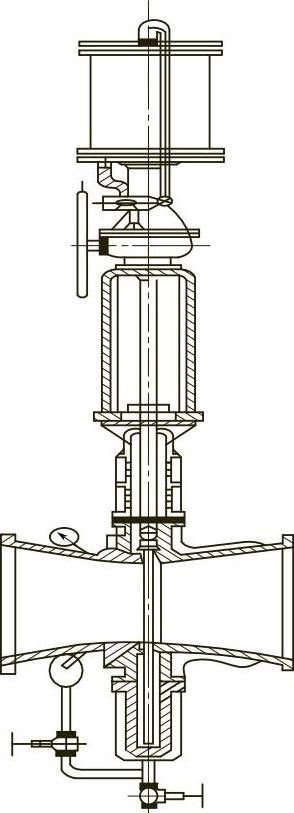
Figure 15 Structure diagram of pneumatic high temperature flat gate valve
a. Valve body. The valve body of the high temperature flat gate valve consists of the inlet valve body and the outlet valve body. The large flanges at the ends of the two valve bodies are respectively connected with the pipeline flanges.
There are 4 gate purging steam injection ports on the inlet valve body, and the opening positions are evenly distributed along the radial direction of the valve body.
b. Gate. The gate is in the shape of an "8" blind plate and is smooth and flat. The gate is inserted between the two sealing surfaces of the valve passage. Whether it is fully open or fully closed, the gate and the sealing ring are always in close contact with each other to protect the seal. The surface is not scoured by the fluid. There are 6 round holes on the gate, which are hinged with the connecting block through the pin shaft. The gate is connected to the head of the valve stem through the "T"-shaped groove of the connecting block. The ring structure of the sealing valve seat can enhance the shear resistance of the non-metallic sealing ring.
12Cr13 alloy spiral wound gasket is used for the flat gate valve and pipeline connection flange, and the valve body and the upper and lower valve cover sealing gaskets are of metal-coated asbestos plate (iron-coated ceramic fiber felt) structure.
c. Valve stem. The bottom of the valve stem is "T"-shaped, which is connected with the "T"-shaped groove on the upper part of the gate, and the upper end is connected with the transmission device through trapezoidal threads.
d. Sealing ring and sealing element. The sealing performance of the high temperature flat gate valve mainly depends on the non-metallic sealing surface of the valve passage. The sealing surface is positioned by the metal ring frame of 06Cr19Ni10, and the sealing pressure ratio between the sealing ring and the gate is adjusted by the connecting bolts of the valve body. The upper and lower ends of the valve body are respectively connected with the upper and lower valve covers through rounded rectangular flanges, and the valve body is provided with a water jacket for cooling the sealing ring; usually, the annular groove of the cooling jacket of the valve body and the cooling water inlet and outlet are processed and formed before being connected with the sealing ring. After welding, the material of the two halves of the valve body and the sealing ring is 06Cr19Ni10.
e. Steam purging and cooling. The function of setting the purging and cooling steam is to prevent the deposition of foreign matter or catalyst on the gate and the sealing surface, and blow out the catalyst that falls into the valve cover instantly when the gate is opened, so as to ensure that the gate can reach the fully closed position, and at the same time, it can cool the gate and the valve. The sealing surface increases the service life.
②Characteristics of high temperature flat gate valve
a. Regardless of the fully open or fully closed position, the sealing ring is always in close contact with the gate, and solid particles will not be embedded in the sealing surface to avoid damage to the sealing surface.
b. The sealing ring is made of high-quality flexible graphite, which can basically achieve complete sealing.
c. The force required to close the valve is mainly to overcome the friction between the gate and the sealing ring. This resistance changes little during the opening and closing process, and the increased friction resistance at the initial and final positions can act as a buffer.
d. The structure is simple, the gate plate and the sealing ring do not need to be ground, and the manufacture, installation, maintenance and replacement of the sealing ring are very convenient.
e. Not affected by high temperature thermal deformation, the sealing between the gate and the sealing ring is reliable, and the sealing surface will not be bitten.
 WENZHOU WEITUO VALVE CO., LTD.
WENZHOU WEITUO VALVE CO., LTD.